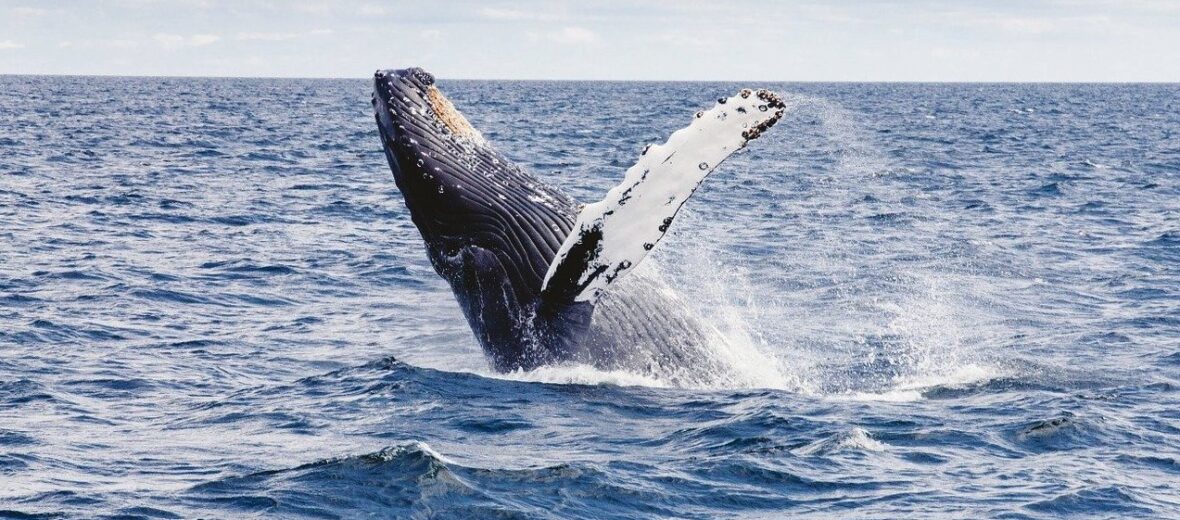
Known for their haunting, melodic songs and measuring about the length of a school bus, it’s the humpback whale. They get their namesake from the small hump on their back, just before their undersized dorsal fin and the way they arch their back, just before making a dive. These baleen whales have been hunted for centuries and nearly to the brink of extinction! They now number an estimated 80,000. Humpbacks have, as a result of an international ban on whaling, bounced back from their populations being devastated. Now these beautiful creatures are listed as Least Concern, by the IUCN. These magnificent cetaceans can be found all over the world, based on what season it is.
First the Stats…
Scientific name: Megaptera novaeangliae
Weight: Up to 60,000 lbs.
Length: Up to 52 feet
Lifespan: Up to 50 years
Now on to the Facts!
1.) One of their most noticeable characteristics are their huge dorsal fins (flippers). These can grow to nearly 15 feet!
2.) Humpbacks travel in pairs or small groups of up to 4 whales. A group of whales is called a pod. This term refers to all whales and dolphins.
3.) They prey primarily on krill. This appetite yields up to 1.5 tons a day!
4.) A popular whale to watch, they will frequently breach the water with their fins, their tail, or even leap almost totally out of the water. It is presumed that they breach for a number of reasons. It is surmised that they breach for communication, fun, and to remove parasites from their skin.
5.) “How do they eat,” you ask? Well, they take in huge gulps of water, then they close their mouths, forcing the water through their baleen plates (fringed brushes that grow in rows from the upper jaw). This traps the fish, krill and other invertebrates in the baleen for them to swallow.
But wait, there’s more on the humpback whale!
6.) It has been observed many times that humpback whales will circle schools of krill or anchovies. They then blow bubble nets, encircling them and trapping the prey. After which, the whales swim upwards into the middle of the trapped ball of food thus capturing more with less effort.
7.) Orcas often hunt humpback whale calves.
Did you know…?
Their songs can be heard up to 20 miles away, and each song they sing can be nearly 20 minutes long. They also repeat the same song for hours.
8.) Females give birth about every 2 – 3 years.
9.) When calves are born they measure 20 feet long and weigh nearly 2 tons!
10.) Calves need to drink about 100 lbs. of milk a day to survive. That is over 12 gallons of milk a day!
But wait, there’s still more on the humpback whale!
11.) Humpback whales actually have 2 blow holes. One hole for each lung.
Did you know…?
Just like our fingerprints, humpback tails and underbellies are all different. Each whale can therefore be identified by these body parts.
12.) Their lungs are as large as a small car.
13.) These whales, like other whales don’t breathe automatically. They have to think about it. This is why, when they sleep, they only put half of their brain to sleep, while the other stays alert enough to remember to breathe. This is called asymmetric slow-wave sleep.
14.) Humpbacks migrate about 16,000 miles per season!
Now a Short Humpback Whale Video!
Want to suggest a critter for me to write about? Let me know here.



